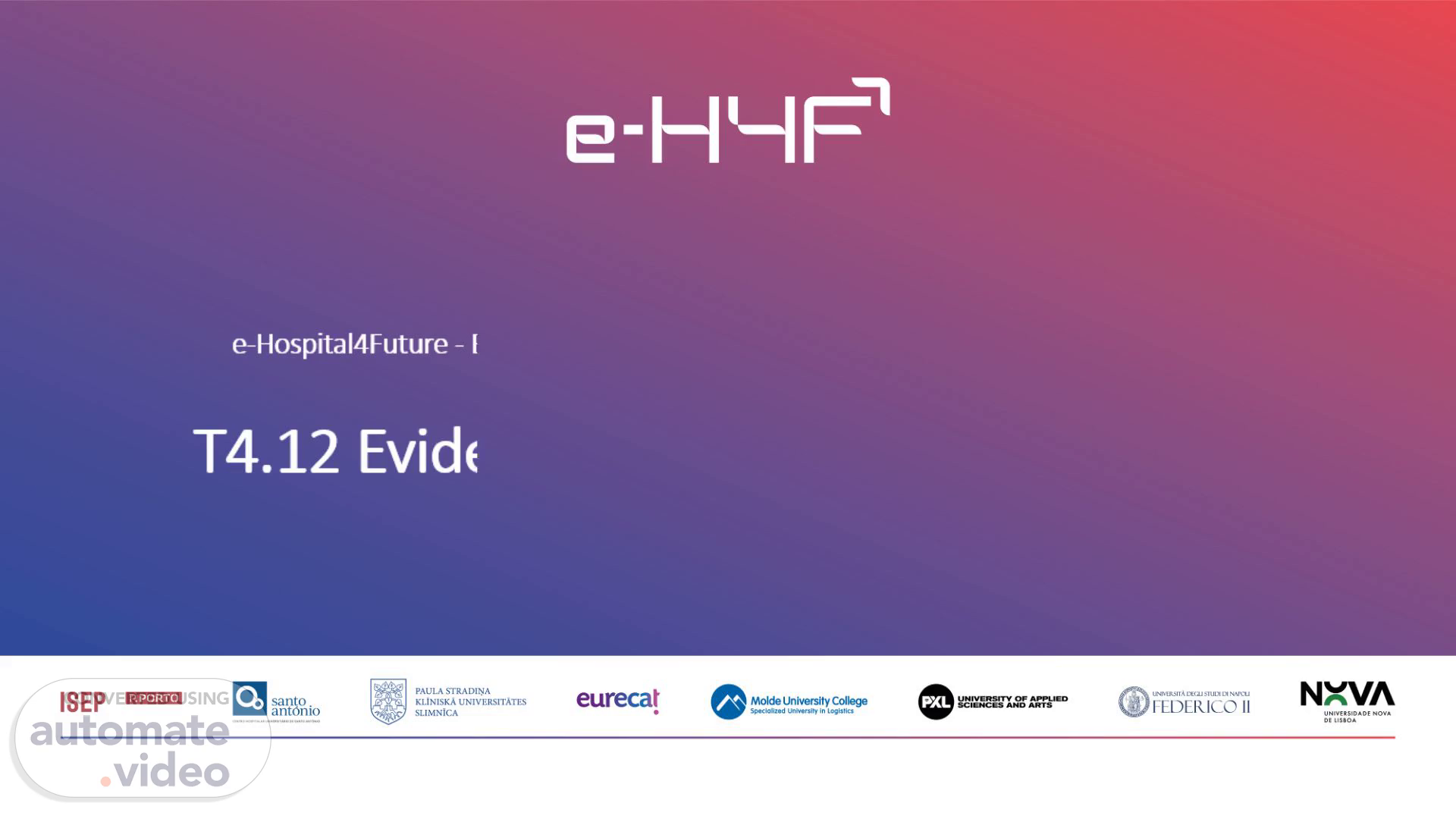Scene 1 (0s)
ISEP antbnio PAULA S TRADINA KLINISKÅ UNIVERSITATES SLIMNtCA eurecat Molde University College Specialized in Logistics UNIVERSITY OF SCIENCES ARTS FEDERICO II NXVA NOVA.
Scene 2 (19s)
Discover how Artificial Intelligence is transforming diagnosis, treatment, and health management through innovative technologies such as image classification and generative (A-I). Ideas and Accomplishments..
Scene 3 (33s)
[Audio] Generative (A-I) in healthcare refers to the use of artificial intelligence techniques, specifically machine learning and deep learning, to create new data, models, or insights that aid in various aspects of healthcare. The aim is to improve clinical decision making, streamline operations, enhance patient care, and facilitate medical research. Here are several ways in which generative (A-I) is being applied in healthcare: 1. Medical Imaging and Diagnostics (A-I---)-driven Image Generation: Generative (A-I) can produce synthetic medical images, such as M-R-I scans, CT scans, or X-rays, to supplement real datasets. This is particularly helpful in training (A-I) models with limited labeled data. Improved Diagnostics: (A-I) models can generate detailed visualizations or predictions, assisting doctors in identifying conditions like tumors, fractures, or neurological disorders. For example, (A-I) can help identify patterns in scans that may not be visible to the human eye. Data Augmentation: Generative models can produce additional images to address the scarcity of annotated medical images, improving model training and diagnostic accuracy. 2. Drug Discovery and Development Molecular Structure Prediction: Generative (A-I) is utilized to design new molecules with specific properties, such as molecules that could lead to the development of new drugs. (A-I) can suggest molecular structures based on existing knowledge, significantly speeding up the process. Synthetic Data for Drug Research: Generative models can simulate clinical trials or predict the effects of drug interactions by generating synthetic patient data. This can be used to test hypotheses and refine drug discovery processes before conducting real world testing. 3. Personalized Medicine Patient Specific Treatment Plans: (A-I) can generate personalized treatment plans by analyzing individual patient data, including genetic information, medical history, and lifestyle factors. This results in more effective and tailored healthcare interventions. Predictive Models for Outcomes. Generative (A-I) can help predict patient responses to treatments based on similar past cases, improving the chances of selecting the most effective therapy for a given patient. 4. Natural Language Processing (N-L-P--) in Healthcare Text Generation for Medical Reports: Generative (A-I) can automatically generate reports from structured data such as lab results, clinical notes, or imaging results, reducing the administrative burden on healthcare professionals. Medical Chatbots: (A-I---) driven chatbots, powered by generative models, can assist in patient engagement, providing information about symptoms, medication, or treatment options. Automated Summarization: Generative models can summarize long medical records or research papers into easily understandable insights for healthcare providers. 5. Clinical Decision Support Systems (C-D-S-S-) (A-I---) Based Knowledge Generation: Generative (A-I) can be used to synthesize new clinical knowledge from existing medical data and research. This can support healthcare professionals in making informed decisions based on the latest evidence. Predictive Analytics: By generating predictive models, (A-I) can assist in forecasting patient outcomes, such as predicting the likelihood of complications or hospital readmissions, allowing for early interventions. 6. Robotics and Surgery Robotic Surgery Assistance: Generative (A-I) models can assist in pre surgical planning by simulating different approaches or predicting the best surgical technique based on the patient's anatomy. Simulation and Training: (A-I) can generate virtual surgical environments for medical training, helping surgeons practice complex procedures in a risk free setting. 7. Healthcare Workflow Automation Resource Allocation: (A-I) can generate optimal staffing schedules or patient flow models to enhance hospital operations, reducing waiting times and improving resource management. Automating Administrative Tasks: Generative (A-I) can handle repetitive administrative tasks. Examples of tasks that can be automated in the healthcare industry include processing insurance claims, scheduling appointments, and verifying patient data. This automation frees up healthcare professionals to focus on providing care to patients. However, there are ethical considerations and challenges when it comes to the use of generative artificial intelligence (A-I---) in healthcare. One of the main concerns is biased data generation. When (A-I ) models are trained on non representative or incomplete datasets, there is a.
